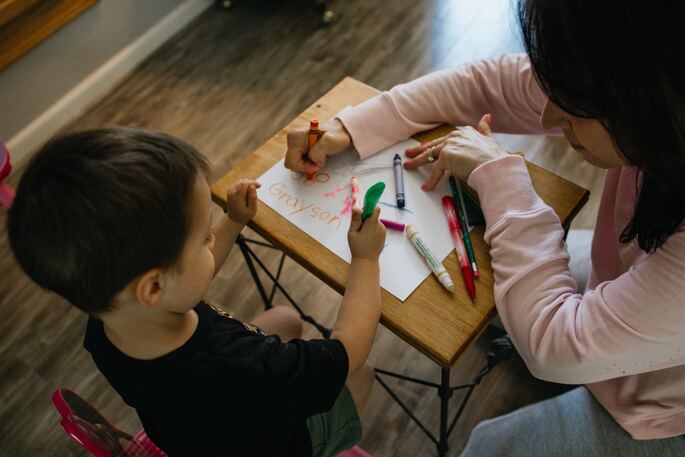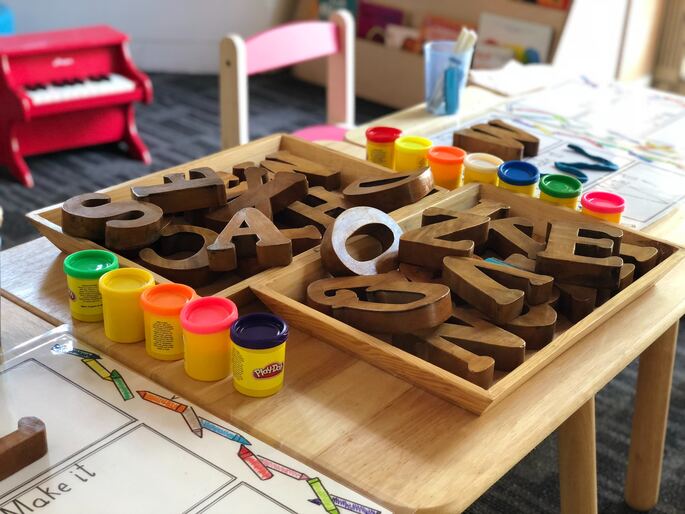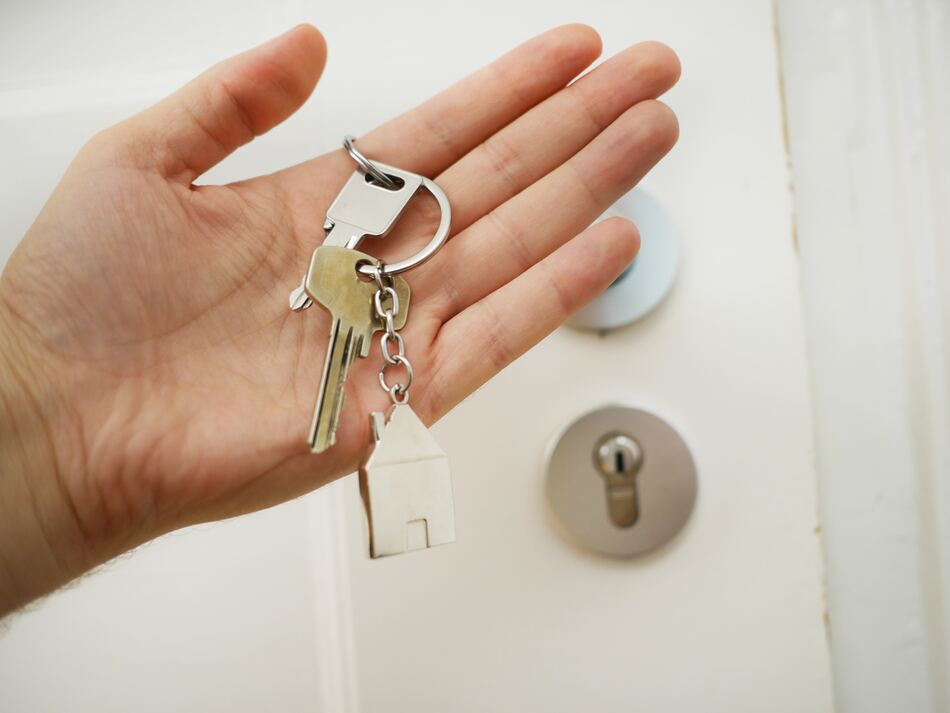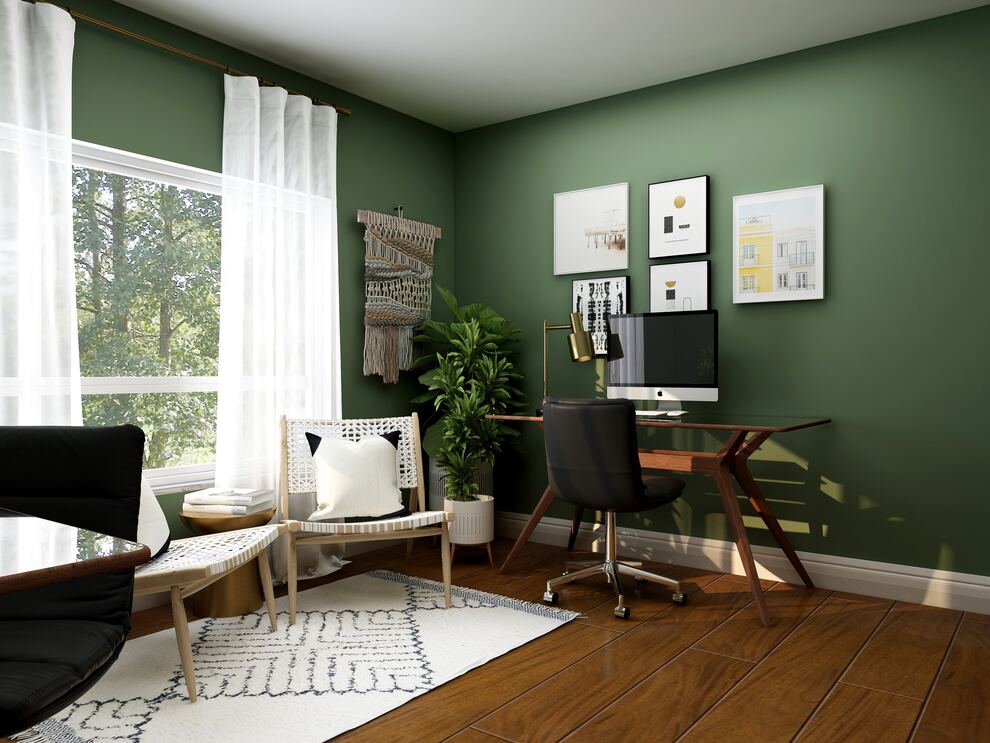Ensuring the safety of little ones in a home daycare setting is both a profound responsibility and an intricate challenge. As today’s parents increasingly seek intimate, personalized childcare settings, those who provide these services are tasked with harmonizing the warmth of a home environment with the safety standards akin to professional institutions. This requires a thoughtful blend of business acumen and a deep understanding of child safety protocols.
In response to the growing popularity and demands of home-based childcare, it’s crucial to be equipped with the right knowledge and tools. By tapping into the insights of industry leaders and experts, we aim to arm in-home daycare providers with comprehensive strategies and actionable advice.
Ensuring Safety in Your Home Daycare Environment
The foundation of a reputable home daycare is its commitment to children’s safety. As caregivers, it’s essential to remember that parents entrust their most precious beings into your care, expecting their children to be as safe with you as they are at home.
Consistent assessment of the physical environment is pivotal. Every corner of the space should be scoured for potential hazards, from the toys that are played with to the cabinets that store household items. Toys should be chosen with the utmost care, ensuring they are age-appropriate and free from toxic materials. On the other hand, household items, especially harmful substances, should be kept in child-proof cabinets or entirely out of children’s reach. Anchoring heavy furniture to prevent any tip-overs is another crucial precaution.
Preparation for emergencies can never be overemphasized. This includes having essential tools like smoke detectors and first-aid kits and ensuring that children and staff are well-drilled in evacuation plans. Alongside this, the importance of maintaining hygiene standards, especially in communal play areas, stands undisputed. The spread of illness can be minimized by promoting simple routines such as hand washing and having clear guidelines about attending when unwell. Incorporating these practices into a comprehensive business plan can be the difference between a well-run home daycare and one that is constantly facing challenges.
Outdoor play is vital for a child’s development, but it brings its own set of challenges. A securely fenced play area, regular equipment checks, and an awareness of the local environment are fundamental to guarantee outdoor safety. On the flip side, regarding indoor safety, having a stringent visitor policy ensures that only authorized individuals have access to the children. Technologies such as security cameras and logs can further bolster this security.
In the rapidly evolving world of childcare, continuous learning remains essential. Being abreast of the latest research, methodologies, and best practices ensures that the daycare remains a haven for its attendees. This pursuit of knowledge also opens channels for open communication with parents, fostering a relationship built on mutual trust, respect, and shared responsibility. After all, the collective aim is the well-being and development of the child, and safety is the cornerstone of that journey.
Within the realm of safeguarding your daycare, a broader view of home safety extends beyond immediate precautions. One aspect often overlooked is the stability and protection of the home’s infrastructure itself. Like a ship’s captain ensuring the vessel is sea-worthy, a home daycare provider should take steps to protect the physical entity where the children learn and play. Securing the right insurance coverage guarantees swift recovery from unforeseen events like fires or natural disasters and reinforces a commitment to long-term, holistic safety. Such foresight builds an extra layer of trust with parents, subtly communicating that you’ve taken every possible step to protect their child’s environment.

What the experts say
Whether you’re just starting your home daycare or aiming to refine its safety protocols, the insights from our industry experts will guide you on the path to a more secure and nurturing environment.
What should I consider when choosing the best staff for my home daycare, and what criteria should I take into account to ensure they are qualified and suitable for working with children?
“Finding and hiring the best child care professionals requires careful consideration and processes. Before starting the vetting stage, it’s important to outline the absolute necessities required of your caregivers, like experience and safety, to name a few.
For all hires, professional background and responsibility requirements warrant the most consideration. Setting benchmarks for how much experience and training you’re looking for will help set clear expectations for applicants and narrow down your top candidates. Beyond years of experience in the industry, look for qualifications that will apply to your specific environment. Are you looking for someone with a background in caring for infants? Do you require that they’ve worked in a child care center previously or is in-home care, like a babysitter or nanny, suitable experience? What are the training and certification requirements, both by law and your business standards (CPR, first aid, administering medicine, allergies, emergency situations, etc.)?
Running background checks is a valuable safety tool, but they shouldn’t be the only way you screen your candidates. In addition to criminal background checks, conduct thorough interviews with each candidate and ask each reference detailed questions to get a fuller picture of the candidate’s abilities and experience.
Once the hire is made, it’s critical to create and keep a culture of accountability that’s built on mutual trust among you, your staff, and your clients. Prioritizing safety and transparency through protocols including staff performance reviews, parental feedback, video monitoring systems, and daily logs all contribute to ensuring you’re providing the best care experience possible. Be sure to outline how each staff member will be regularly monitored and evaluated upfront (i.e,. before they’re hired) to set expectations and create an open line of communication with your employees from Day 1.”
Sittercity Team | Sittercity
What devices and setups should I consider implementing in my home childcare center to ensure the safety and security of the children I care for?
“Providing a safe environment for children is the most important part of a home childcare center. But it can also make your day very busy. Being able to prioritize safety and well-being should almost be an automatic practice. That’s where devices come in.
You can’t think of everything all of the time, so having a helping hand in the form of an app is going to go a long way to making sure you’re doing the best for the children in your care.
Most apps can be downloaded onto the majority of smartphones and tablets and are used to remind you of the responsibilities you have to keep children safe. These can include:
- Completing checklists (such as cleaning or inspections)
- Helping with basic health and safety practices (such as hazards, maintenance & evacuation)
- Keeping a record of the children in your care and their info (such as dietary requirements)
- Being able to show compliance with state, industry, or government regulations
- An ideal setup that we see many in-home childcare centers adopt is to have a tablet at the front door so families can sign children in and out.
Once the children are in your home, you’ll need another device to be able to do the activities (as mentioned above). This can be done on a smartphone as you can carry it around in your pocket and can easily do what you need to do as quickly as possible.
Of course, there are many ways to adopt different devices in your home, and it’s important to do what works for you. But optimizing for efficiency by using the least amount of apps/devices that can help you get the job done is what will work best.”
Jack Ritchie | OWNA
What specific safety measures should I implement in my home daycare to create a child-friendly and secure environment?
“To create a safe and secure environment when starting your in-home daycare, you will want to take into consideration the following:
- Childproof your home. This includes things like securing cabinets and drawers, putting safety gates on stairs and doorways, and removing any potential hazards such as sharp objects, chemicals, and medications.
- Have a first aid kit. Familiarize yourself with what is in it and what to do in an emergency. You should have a plan for how to contact emergency services as well as how to evacuate in case of fire.
- Create a safe outdoor safe. This area should be fenced in and have a soft landing surface for falls. Ensure no hazards exist, such as sharp objects, poisonous plants, or exposed electrical outlets.
- Designate a nap room. Make sure you have a quiet nap area that has cribs for babies or cots or nap mats for toddlers. While parents may supply bedding and blankets, be prepared with clean backups.
- Abide by licensing restrictions. Every state is different in terms of what the rules are for in-home daycares. Review your state’s licensing requirements to make sure your home is set up appropriately.”
Sara Mauskopf | Winnie
What factors should I consider when utilizing virtual learning systems in my home daycare to ensure that the content is age-appropriate and tailored to each child’s individual needs and development?
“When integrating virtual learning systems, such as the ROYBI Robot, into your home daycare, ensuring age-appropriate and personalized content becomes even more feasible. Several pivotal factors should be considered to strike the right balance. First of all, evaluate the age range of the children under your care to align the content with their cognitive capacities, language development, and attention spans.
Subsequently, select platforms that offer customization features. ROYBI Robot, for instance, allows you to tailor difficulty levels, pacing, and subject matter, catering to each child’s distinct requirements. Utilizing its diverse range of interactive lessons, games, and visual aids can effectively accommodate different learning styles.
Prioritizing safety and supervision remains paramount. Choose platforms like ROYBI Robot that ensure a secure online environment, shielding children from inappropriate content and interactions. Implement stringent parental controls and ensure children are supervised during online engagements.
Maintaining an equilibrium between screen time and hands-on activities is essential. Virtual learning should ideally complement traditional play and social interactions, contributing to comprehensive development.
Collect feedback from parents and closely observe children’s engagement levels. Regular parent communication aids in understanding a child’s progress and evolving interests, facilitating necessary content adjustments.
Lastly, flexibility is key. Children’s developmental needs change rapidly. Consistently review and update the virtual learning content, adapting to shifting requirements.
Incorporating these considerations and utilizing innovative tools like the ROYBI Robot will create a nurturing virtual learning environment tailored to each child’s unique developmental journey while upholding age-appropriate content and nurturing a genuine passion for learning.”
ROYBI Robot Team | ROYBI Robot
What role can a registered agent or legal professional play in helping me establish my home daycare, and how can they assist in ensuring compliance with laws and safety standards?
“A registered agent is required in all 50 states in the United States for a home daycare business, an e-commerce business, or any business you are forming. Having a registered agent is critical for your home daycare business because it ensures your entity will stay 100% compliant and not face risks of dissolution by the state for not paying state taxes or missing other important state notices.”
Arjun Mahadevan | doola
How can integrating digital tools streamline daily operations and tasks in childcare, ensuring efficient management even when you’re away from the desk?
“With manual methods such as paper checklists, a lot of tasks get missed because there is no reminder and notification system to make sure you complete the checklist each day. The best thing about digitalizing your checklist and task management system is the reminder system to make tasks get completed by your staff on time. There are multiple reminders that are sent out to remind your staff to complete the task by the due date, and if it’s not completed by the due date, there are overdue reminders as well to make sure they complete the task.
Beyond the reminder system, most digital task management systems have a calendar view that empowers your team to gain a holistic view of their weekly workload. This is especially useful when you have weekly and monthly cleaning tasks for your childcare facility because it allows your team to prioritize their tasks for the week.”
Warren Wu | Coast App
What essential safety protocols should I implement in my home daycare setting to ensure the well-being of children, and how can I continuously monitor and update them to maintain a high standard of care?
“Family child care is unique in many ways, particularly in the area of safety and health. Because your house is used as a childcare environment, you need to be aware of hazards that you will not encounter in other types of childcare centers, such as unlocked basement doors, yard tools, dogs, and medicine cabinets. Your first responsibility as a family childcare provider is to keep children safe and healthy while in your care. This in itself is a big responsibility, and how you do this will determine the developmental growth of a child. As the number of family childcare providers continues to grow rapidly across the country, states are responding by instituting tighter regulations and providing more detailed guidance. ChildCare Education Institute’s online beginner-level course ADM102: Family Child Care Basics will help ensure family care providers understand not only their responsibilities for providing a safe, healthy environment but also the important role they play in helping children reach their full potential.”
CCEI Team | ChildCare Education Institute (CCEI)
How can home daycare providers utilize therapeutic and educational resources to enhance the sensory experiences and cognitive development of children in their care?
- “Home daycare providers can greatly enhance sensory experiences and cognitive development for children in their care by incorporating therapeutic and educational resources from Therapro, among others. Here are several strategies and Therapro resources that can be used:
Sensory-Focused Environments: Create sensory-rich environments within your home daycare. Utilize sensory tools, such as fidget toys, or sensory integration equipment like therapy balls. These resources can stimulate children’s tactile, proprioceptive, and vestibular senses, promoting sensory exploration and integration.
Sensory Bins: Therapro offers various sensory bin materials, like mini animals or sensory beads. These bins can be customized to match educational themes and provide opportunities for tactile exploration, improving fine motor skills and cognitive development.
Fine and Gross Motor Activities: Tools like therapy putty, sensory beads, and balance boards are examples of therapeutic resources that can be integrated into activities to enhance sensory experiences. For instance, swap therapy putty for traditional playdough activities to bring in grounding proprioceptive input. Add a balance board to traditional circle time activities to add vestibular stimulation that can increase alertness.By integrating therapeutic and educational resources into your home daycare setting, you can create an enriching environment that fosters sensory experiences and cognitive development for the children in your care.”
Allyson Locke | Therapro
What are the best tips and practices I should consider when starting my home daycare to ensure it’s successful, safe, and nurturing for the children I care for?
“Starting a home daycare is a rewarding endeavor, and ensuring it’s successful, safe, and nurturing is paramount. Here are some key tips from Child Care Biz Help:
1. Licensing & Regulations: Before you start, familiarize yourself with local and state licensing requirements. This ensures you meet safety and health standards and builds trust with parents.
2. Safe Environment: Childproof every area the children will access. This includes securing furniture, using safety gates, and removing potential hazards. Regularly inspect toys and equipment for wear and tear.
3. Structured Curriculum: Implement a structured yet flexible curriculum tailored to different age groups. This fosters cognitive and emotional development.
4. Training & Professional Development: Invest in ongoing training, especially in first aid and CPR. Stay updated with the latest in early childhood education.
5. Open Communication with Parents: Establish clear communication channels with parents. Regular updates about their child’s progress and daily activities build trust.
6. Healthy Meals & Snacks: Nutrition is key. Offer balanced meals and snacks and consider dietary restrictions and allergies.
7. Outdoor & Physical Activities: Ensure children get regular physical activity. If you don’t have outdoor space, plan indoor activities that promote movement.
8. Tuition Pricing: Project annual operating expenses for your program and conduct a market analysis of your competition to help set your tuition pricing. If you set your pricing too low you could set your business up for failure.
9. Business Management: Consider using software for scheduling, billing, and communication. This streamlines operations and ensures professionalism.
10. Marketing Plan: Establish a pre-launch marketing plan and post-launch plan to obtain new customers. Make sure to include a strong online presence, word-of-mouth referrals, and collaboration with community partners.
11. Retention Activities: Have a plan to retain both your families and any staff you hire. It’s much less costly to retain your customers than to find new ones.
12. Know Your End Goal: Even though you are just starting out, it’s important to know what your end goal is for your home daycare. If you want to grow to a licensed group childcare center, you may want to save more money. You may just want to capitalize on the home deductions while your own children are growing up. Whatever your end goal is, have a plan before you even get started.
Remember, the heart of a successful home daycare is the love, care, and attention you provide to the children. With the right planning and dedication, you’ll create a nurturing environment where children thrive.”
Dan Jens | Child Care Biz Help:
What are the key components for effectively blending in-person and remote working methods in the evolving hybrid model?
“The way we work has changed a lot since the pandemic. Working from home has its pros and cons. On the positive side, employees gained more control over their schedules, avoided time-consuming commutes, and enjoyed greater work-life balance. Some even found it easier to focus on work without the usual office distractions. However, it also blurred the boundaries between work and personal life, leading to potential burnout and feelings of isolation. And it was tough to have creative ideas and teamwork in virtual meetings. The employees get frustrated with the long hours of Meet/Zoom calls. Thus, returning to the office by adopting the hybrid work model- offers the best of both worlds, allowing employees to split their time between working remotely and from the office. Recognising the need for a balanced approach, we are also going to adopt the Hybrid working Model full-fledged starting next month by acknowledging the value of in-person collaboration while retaining the flexibility that remote work offers.”
Bhoomi Vasani | SoluteLabs
What tips and considerations should I keep in mind when designing a non-toxic environment for my home daycare to ensure the safety and well-being of the children?
“Did you know there are over 80,000 chemicals that are legal to use in the manufacturing of fabrics? Did you also know that animal-based materials such as leather, wool, down, and silk contain dangerous toxic chemicals as well?
Leather, for example, contains over 250 chemicals that include arsenic and lead. As a chemical and cruelty-free designer, my goal is to create environments for my clients and their children that are safe, non-toxic, and kind. Here are a few things to consider:
-Don’t be misled by false advertising regarding mattresses. Wool, bamboo, soybean, and foam mattresses are highly toxic and filled with chemicals. Adults spend 1/3 of their life in bed, and infants nearly 20 hours a day sleeping. Our mattress is key to good health. Choose organic cotton mattresses only.
-Choose non-toxic, eco-friendly paints or wallpaper. Many paints and wallpapers contain very dangerous chemicals that off-gas (release dangerous, highly toxic chemicals known as VOCs).
-Go organic as much as you can. Look for “GOTS Certification” (Global Organic Textile Exchange). It certifies that the materials are completely organic. Organic materials have less impact on the planet and all living creatures (human and non).
- Become familiar with non-animal-based, healthier materials. Hemp, cotton, bamboo, linen, cork, rubber(kapok), and buckwheat are a few of my favorites.
- Don’t buy anything that is labeled “wrinkle-free,” such as sheets. These products are soaked in formaldehyde and poisonous.”
Deborah DiMare | Vegan Design
How can I hire the best childcare worker for my home daycare to ensure they are aligned with the values and safety standards of my service?
“The key to hiring the right workers is understanding exactly what you’re looking for. Before you begin the hiring process, figure out exactly what you want in an ideal new hire. What skills, personality traits, availability, or formal training will a staff member need for the position? Once you determine this, it’s time to seek out qualified applicants.
Create a job description that clearly lists the requirements, qualifications, and expectations you have for this position. Don’t be afraid to include your values and safety standards here. Once your job description is ready to go, publish it to hiring websites and share it with your network – getting referrals from trusted colleagues is always the best way to go.
During the interview process, include a phone screen, an in-person interview, and a short trial shift where you can observe how candidates interact with the children in your care. In our experience, you’ll be able to tell very quickly whether they’re a great fit for the values and safety standards of your service.”
Xavier Launay| Daily Connect
What are the best eating practices I should follow in my home daycare to ensure the children have a balanced and nutritious diet?
“The right daycare menu starts with good communication! Give parents a weekly menu or list of foods and snacks you will provide. Set a daily feeding schedule to meet the children’s nutritional needs. Children under 6 years old should be offered food every 2 to 3 hours. Verify if the child is still consuming breast milk or infant formula. Learn the proper way to handle and store these to give children the best nutrition possible and to prevent illness. Ask parents about their child’s food allergies or specific dietary needs. The most common food allergies include milk, tree nuts, eggs, peanuts, fish, wheat, shellfish, and soybeans. If a child has an allergy, you may need to use separate cutting boards or kitchen utensils to prevent cross-contamination. Also, communicate with parents about your cleaning practices. When done properly, plain soap and water are best for washing hands and for keeping food prep and serving areas clean. Learn about the health risks of harsh disinfectants and common hand sanitizing products.
Here are six tips for creating a healthy daycare menu:
- Emphasize fruits and vegetables. At Tiny Health, we encourage “eating the colors of the rainbow” to support gut health. Fruits and vegetables provide essential nutrients like fiber and vitamin C. Yet toddlers can be picky eaters! Even if the children in your daycare aren’t receptive to certain fruits or veggies at first, continue to offer them. Different colors and textures can help keep a child’s food exploration fun.
- Provide protein-rich foods like meat, poultry, and eggs. These foods are rich in nutrients such as iron, zinc, choline, and omega-3 fatty acids, which are crucial for a child’s growth and development.
- Offer dairy products in moderation. Regularly add some dairy products like baked dairy, yogurt, and cheese to the menu. Greek yogurt is especially high in protein. But keep an eye on the sugar content of flavored yogurts! Keep in mind that too much cow dairy can contribute to iron deficiency in infants and lead to constipation in toddlers.
- Include whole grains, legumes, and seeds. These carbohydrates feed a child’s microbiome. They also contain fiber like cellulose, which promotes healthy digestion. Try sprinkling ground flaxseed or cinnamon on top of lunches for added fiber.
- Avoid serving processed foods and snacks: While processed foods and snacks are convenient, many contain loads of added sugar and salt, refined seed oils, flavoring, artificial colors, or emulsifiers that can harm the gut. When possible, offer whole foods that contain the nutrients kids’ bodies need.
- For drinks, serving water is best. If serving milk, full-fat milk provides the best nutrition. Avoid serving juices and drinks with added sugar.”
Cheryl Sew Hoy | Tiny Health
What hygiene practices should I follow in my home daycare to maintain a clean and healthy environment for the children?
“Parents like me will feel more secure knowing that a daycare follows good hygiene and cleanliness practices. That starts with immediate handwashing when children enter. (Obviously, the same goes for adults!) High-touch surfaces should be disinfected multiple times throughout the day. It only takes a moment to hit the faucets, counters, and light switches with disinfectant wipes. Toys should be disinfected on a regular schedule. Having fresh air and sunlight in the room is vital as these are natural disinfectants. Items like sippy cups and pacifiers should be clearly labeled so that they are not shared. Kids of daycare age can be taught to sneeze into a tissue or their elbow, to use and dispose of tissues for runny noses, and to properly wash hands. Make it fun! There are lots of cute songs and rhymes about hygiene practices.”
MomCaveTV team | MomCaveTV
What effective communication techniques can I use in my home daycare to foster a deeper understanding and connection with the children I care for?
“To listen, understand and interpret the behavior of young children. That is their language. Do not take behavior at face value with either praise or punishment, thinking that will make the child behave the way you want. Behavior is your signal and lets you know how they are doing internally. Behavior is the end product of the internal emotional state of the child, which has met with an external reaction or event. The behavior is the last thing you should address. The worse the behavior, the more pain the child is in, so punishing or simply admonishing the behavior creates more internal stress, which leads to worse behavior. This child is having a problem, not being a problem. It is your cue to attend to the emotions of the child. Setting limits is important, but first, acknowledge that the child is having a hard time. Try calmly removing acting out child, connect with acknowledgment and validation — ‘Jimmy has the toy you want, and you tried very hard to get it from him. You’re upset that you can’t play with it right now.’ Let the emotions come, or the meltdown happen. Then — ‘When you’re ready, I will help you find another toy to play with until Jimmy is done with the one you really want.’”
Bonnie Harris | Bonnie Harris
How can I cultivate a network of reliable support in my home daycare, such as babysitters or helpers, to ensure that backup assistance is available for unexpected childcare demands or emergencies?
“Ensuring the reliability of your helpers involves crucial aspects. After conducting thorough background checks and evaluations, as exemplified by Call Emmy, focus on two key elements:
1. Establishing a clear communication protocol
and
2. Cultivating a trusting relationship with your care providers.
The communication protocol should be documented, specifying the frequency (daily, as needed, etc.), modes of communication (text, phone, email), and response expectations (weekdays, weekends). It’s essential that all care providers fully comprehend this protocol. While an effective communication plan is necessary, it alone isn’t sufficient. You must also build personal connections with your care providers, understanding their preferences, valuing their contributions, and acknowledging their importance as the backbone of your business and brand. Learn about their families, celebrate their birthdays, and occasionally express appreciation. By establishing a relationship on a strong foundation, your providers will proactively assist during unforeseen situations, be it emergencies or unexpected demands, ensuring reliability and comprehensive coverage.”
Arezou Zarafshan | Call Emmy
How can I efficiently manage record-keeping and administrative tasks in my home daycare, ensuring compliance with requirements while freeing up time to focus on the care and education of the children?
“Alright, fellow childcare providers, let’s talk about the dreaded but oh-so-important task of record-keeping and administrative duties. I know it’s not the most exciting part of running a home daycare, but it’s crucial for ensuring compliance with local regulations and freeing up time to focus on the fun stuff: caring for and educating our little ones.
First things first, let’s get organized. Create a system for recording information about the children in your care, such as emergency contact information, allergy and medical information, and attendance records. Consider using a digital platform or app to streamline the process and make it more efficient.
Next up, don’t forget about the paperwork! Ensure all necessary documentation is up-to-date and
readily available, including contracts, forms for permission to administer medication, and any required licenses or certifications. Keep copies of these documents handy in case of inspections or audits.
To streamline your administrative tasks further, consider outsourcing specific duties, such as payroll or accounting, to a professional service. This frees up your time to focus on the children and their needs rather than getting bogged down with paperwork and numbers.
And last but not least, stay on top of local regulations and requirements to ensure your home daycare is in compliance. Attend training and workshops, and connect with other providers in your area to share information and resources.
With these tips and tricks, you can efficiently manage record-keeping and administrative tasks in your home daycare while keeping things fun and professional. Happy caregiving!”
Hollie Clubb | ClubbhouseKids
What essential outdoor safety tips should I follow in my home daycare to ensure a safe and engaging outdoor play area?
“When thinking about home daycare, it is easy to believe that since it is a backyard home daycare that it is safe, right? Wrong. There are many hazards that unsuspecting children and caregivers can overlook. Here are a few nuts and bolts things to consider when trying to create a more safe environment for your little clients:
The backyard should be closed off so that children don’t have access to streets, neighbors, and other hazards. Since most fencing is constructed of wood, it is essential to make sure that the wood is unable to splinter off into a child. Rest assured, the children will run into it at some point. One inexpensive and effective way to splinter-proof a fence is to use a plastic painter’s tarp. It can be easily purchased from any home hardware center or paint store. It can be clear or white and can even be fun, for if you opt for white, the children can decorate it and draw pictures on it. So not only is it safe, but it creates a new, time-consuming activity! Just be sure to affix the plastic tarping with a strong staple gun or other secure way so that it doesn’t come down easily. It is also a good idea to cut 12-inch slits into the tarping so that if it does fall down, it is not an asphyxiation hazard. Cutting the slits will also help the tarp stay put in windy conditions.
Lawn sprinkler heads. It is essential to be certain that if the outside play area is grass and irrigated automatically, the sprinkler heads are quite flush with the dirt to prevent a tripping hazard. If the play area is cement, please make sure that it is entirely level and free of any cracking. One fun tip is to use soft and spongy garage floor tile to cover up the cement. The tiles can be purchased online by simply searching for “soft spongy floor tile.” That way, not only is it a fun and inviting look for your customers, but it almost eliminates scrapes and falling injuries.
There are a myriad of other hazards to be aware of, such as portable barbeques or even built-in cooking stations. Be sure to move any portable barbeques away from children and ensure that bbq utensils and other such hazards are secure and not accessible to the children. Any propane tanks must be removed, and all access to gas must be secured. Any electrical outlets found in the backyard must also be covered and secured from access. Even something as innocuous as a hose can be a hazard, so it must be removed.
And, just like the inside of your home, any sharp corners must be rounded or covered with foam insulation or otherwise made to be free from danger should a toddler fall into them.
Although the yard should be closed and secured, children can be masters of escape. It is recommended that a warning system be put in place should a child get out and wander off. There are electronic barriers that sound alarms when a child breaks through a barrier, and there are also child location devices with built-in distance alarms, such as the Mommy I’m Here child locators, that allow you to set an allowable wandering area and then alert you via an audible alarm when a child has broken out of the distance proximity. These electronic geo fences are a must. Those are a few tips that should help in creating a more worry-free and enjoyable backyard daycare environment.”
Bob White | Mommy I’m Here
Embarking on the journey of running a small business at home, especially in childcare, demands a delicate balance of passion and precision. Each choice, from the learning tools we introduce to the protective measures we institute, shapes a sanctuary for young minds to flourish. Drawing from the wisdom of industry experts enhances our understanding, fortifying the safe havens we create. As we reflect on the guidance shared, it’s imperative to remember that every effort toward bolstering safety and trust is an investment in the future of our home-based ventures. Let us remain unwavering in our commitment, ensuring our home daycares thrive as businesses and serve as paragons of safety and nurturing in our communities.




